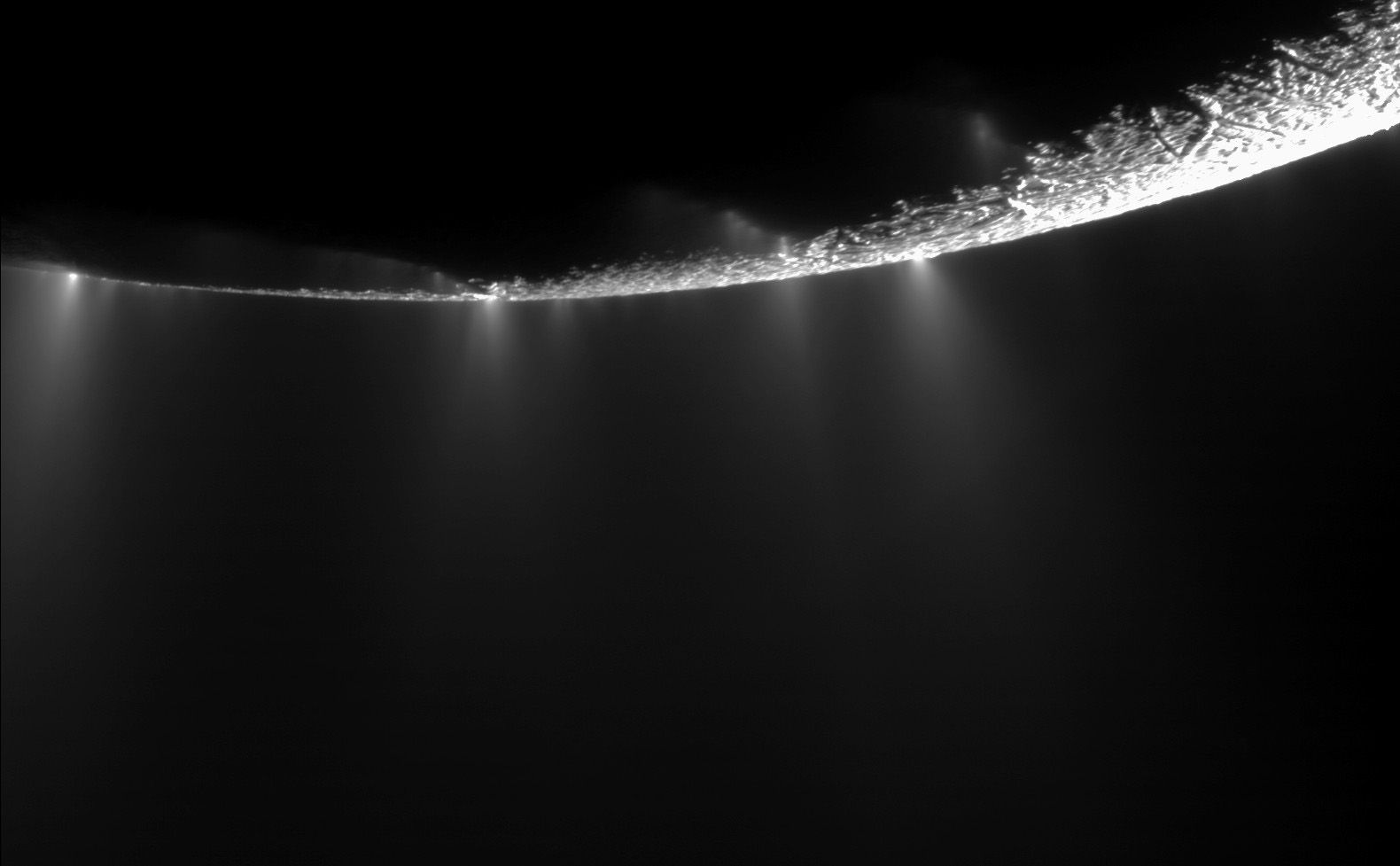
In an unlikely corner of our solar system, scientists have discovered evidence of what they believe is a subterranean ocean. The water means a tiny moon orbiting Saturn could be one of the few places in the solar system with the right ingredients for life.
The moon Enceladus is only 300 miles wide—it would fit between New York City and Charlottesville, Va. It's a mini-world with a bright, icy, frigid surface, and it is just one of an astounding 62 moons orbiting the ringed planet. But it is not just a static, boring ice ball. Fractures on the moon's surface—evocatively named "tiger stripes"—emit jets of frozen water that help form one of the bands in Saturn's rings.

Scientists now say the likely source of those jets is a hidden ocean. Because of the subterranean sea, and other clues such as salts and simple carbon molecules found in the moon's plume, the inside of Enceladus is "a very attractive potential place to look for life," says Jonathan Lunine, the director of the Center for Radiophysics and Space Research at Cornell University. Lunine is part of an international team of scientists—they hail from two Italian universities, the University of California Santa Cruz, the California Institute of Technology, and NASA's Jet Propulsion Laboratory—who wrote a paper for the journal Science, laying out the evidence for the ocean they think is on this moon.
Enceladus's ocean was found using gravity measurements taken from the Cassini spacecraft, which was launched in 1997 and has been orbiting Saturn for a decade. "Gravity allows us, in a sense, to open a window into the interior of the moon," said Luciano Iess, a professor of planetary sciences at Sapienza Universita di Roma and the study's lead author.
Between 2010 and 2012, Cassini buzzed the surface of Enceladus three times to measure its gravity—twice over the south pole, and once over the north, where it came within 50 kilometers of the moon. Radio waves sent from NASA's Deep Space Network traveled approximately 850 million miles to Cassini and then were retransmitted by the craft back to Earth, where the much weaker signals were received and analyzed. By using the Doppler effect—the phenomenon that explains why the sirens of an ambulance change pitch as it passes by you—scientists were able to use those faint signals to conclude that there must be a dense material between the crust and the moon's core. And that dense material, they say, is likely liquid water.
"This water ocean—for indeed it must be very large—will be sitting on top of the rocky core at a depth of about 50 kilometers," says David Stevenson, a professor of Planetary Science at the California Institute of Technology and one of the study's co-authors, "And that ocean may extend halfway or more toward the equator in every direction. This means it is as large, or larger than, Lake Superior."
Scientists don't have direct proof that the ocean exists, nor do they have a way of looking inside the moon to understand where the moon's icy jets are coming from. It's possible that the water could be coming from ice that is melted through friction, as tidal stresses from Saturn affect the moon. "I would say the best explanation is one where there's some 'plumbing system' that connects the ocean through cracks to the plumes and the emissions at the surface, but that's just an educated guess," adds Stevenson.
The next step in searching for life in this inferred ocean, says Lunine, would be to return to the moon: "One way to do that would be to go back to Enceladus with a mass spectrometer, or other chemical analyzers, that could look for heavier organics than Cassini is capable of looking at." They could do so by flying through the moon's icy jets.
Enceladus is not the only spot in the solar system where scientists think an underwater ocean might be: They think one also might exist on the Jovian moon of Europa, which is much bigger than the little Saturnian moon on which they are they are focused. Lunine added: "We just need to be more aggressive in getting the next generation of spacecraft both to Europa and to the Saturn system once the Cassini mission is over."
As for the Cassini spacecraft itself, its primary mission finished in 2008, but it's still in "excellent health," notes Iess. It will continue studying the Saturn system, eventually meeting its end when it plunges into the planet's atmosphere, collecting more data all the way down.
Uncommon Knowledge
Newsweek is committed to challenging conventional wisdom and finding connections in the search for common ground.
Newsweek is committed to challenging conventional wisdom and finding connections in the search for common ground.
About the writer
Rob Verger is liaison to Newsweek’s foreign editions and also reports, writes, and edits. In addition to Newsweek and its ... Read more
To read how Newsweek uses AI as a newsroom tool, Click here.








